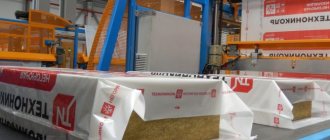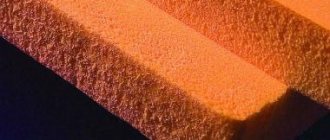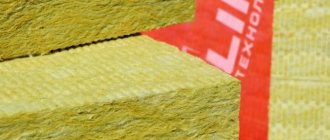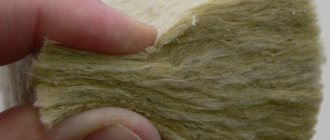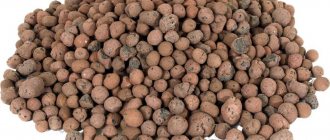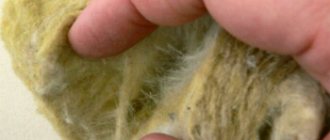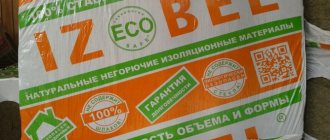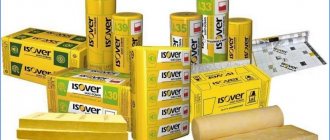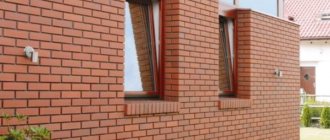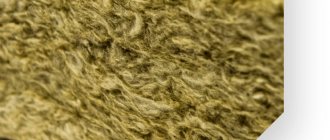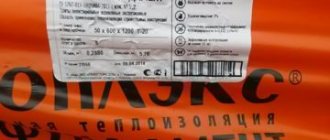Manufacturing technology
The raw materials for the manufacture of mineral basalt insulation are certain rocks. The most commonly used are basalt, dolomite, limestone, diabase, clay, etc. Manufacturing technology consists of two main processes:
1. Getting a melt.
2. Its transformation into thin fibers with the simultaneous introduction of binding components. Basalt fibers used in the manufacture of products usually have a length of 2 to 10 mm and a diameter not exceeding 8 mm. Actually, the basalt insulation itself is obtained in the process of melting rocks. The melting temperature tends to 1500˚С. In the next step, the fibers are bonded to each other using an inorganic binder (filtration sedimentation technique). Simultaneously with this process, pre-pressing is carried out, and everything is completed with thermal drying. As a result of all these actions, a basalt slab is obtained, the characteristics of which make it possible to use it in a wide variety of areas of industrial and civil construction.
Basalt cardboard production
The slab is based on refractory basalt fiber obtained from rocks. The volcanic rocks are passed through an extruder where they are converted into fibers. At the exit of the extruder, the fibers are exposed to cold air, as a result of which they solidify. Next, the fibers are cut to size and then pressed into refractory cardboard. The last stage is the formation of slabs of the required dimensions and thickness.
Bentonite clay is used as a binder for the fibers, which also has similar properties.
Surprisingly, a sheet of cardboard with a thickness of only 5 mm is able to completely shield the kitchen furniture from the hot oven next to it or prevent the heating of the wooden ceiling from the metal chimney passing through it.
Scope of Basalt Slabs
Basalt mineral slabs today occupy one of the first places in terms of consumer demand. The main area of application is insulation and thermal insulation. The construction of residential buildings and structures, industrial facilities cannot do without this material. With the use of basalt slabs and cotton wool, thermal insulation of pipelines, plumbing and heating equipment is carried out. The same material is used to insulate surfaces inside and outside the premises: roofs, floors, walls, attics, basements.
Insulation is used as a lower and upper layer of sound insulation in flat roof ceilings.
Separately, a few words must be said about how to properly insulate the facade with a basalt slab. If the living space is sheathed from the inside, then condensation will form between the insulation and the wall due to the temperature difference, which favors the development of an aggressive biological environment (mold, flexible, etc.). But basalt slabs, laid outside the building along the surface of the facade, will retain heat in the room, prevent mold from developing and further improve the sound insulation of the entire structure.
Basalt insulation is widely used in industrial construction, in the energy industry (thermal insulation of boilers and furnaces at power plants). Basalt slabs and mechanical engineering do not bypass their attention. In this industry, basalt heaters are used for thermal insulation of chambers of furnaces and refrigerators, and car bodies.
Scientific works and dissertations
- Rabinovich, Felix Nisonovich. Composites based on dispersed reinforced concrete: problems of theory and design, technology, structures / FN Rabinovich; foreword I. N. Fridlyander, E. P. Velikhova. - 4th ed., Rev. and add. - Moscow: Assoc. builds. universities, 2011 .-- 639 p. : ill., portr., table; 25 cm; ISBN 978-5-93093-854-8 (in translation)
- Stretched elements from expanded clay-fiber-reinforced concrete on coarse basalt fiber with usual and high-strength fittings: dissertation ... Candidate of technical sciences: 05.23.01. - Nalchik, 2003 .-- 164 p. : ill.
- High-strength fine-grained basalt fiber concrete: dissertation ... Candidate of technical sciences: 05.23.05 / Borovskikh Igor Viktorovich; [Place of protection: Kazan. state architect. - build. un-t]. - Kazan, 2009 .-- 168 p. : ill.
- Fine-grained concrete of high corrosion resistance, reinforced with thin basalt fiber: dissertation ... Candidate of Technical Sciences: 05.23.05 / Buchkin Andrey Viktorovich; [Place of protection: Nauchn.-issled. ]. - Moscow, 2011 .-- 130 p. : ill.
- Fine-grained cement concrete with the use of basalt fiber for road construction: dissertation ... candidate of technical sciences: 05.23.05 / Babaev Viktor Borisovich; [Place of protection: Belgorod. state technol. un-t them. V.G. Shukhov]. - Belgorod, 2013 .-- 180 p. : ill.
- Fine-grained concrete with the use of basalt fiber and complex modifying additives: dissertation ... candidate of technical sciences: 05.23.05 / # Zubova Maria Olegovna; [Place of protection: Volgogr. state architectural and building. un-t]. - Volgograd, 2014 .-- 159 p. : ill.
- Design features of fiber-reinforced concrete lintels of walls of buildings: dissertation ... Candidate of technical sciences: 05.23.01 / Ivlev Mikhail Aleksandrovich; [Place of protection: Kazan. state architect. - build. un-t]. - Ufa, 2013 .-- 261 p.
- Foam-fiber concretes with the use of micro-strengtheners and modifying additives: dissertation ... candidate of technical sciences: 05.23.05 / Kotlyarevskaya Alena Valerevna; [Place of protection: Volgogr. state architectural and building. un-t]. - Volgograd, 2013 .-- 161 p.
- Fibroconcrete in thin-walled products of ring configuration: dissertation ... Candidate of technical sciences: 05.23.05 / Ivlev Vasily Aleksandrovich; [Place of protection: Ufim. state oil tech. un-t]. - Ufa, 2009 .-- 167 p.
Density of material
Modern manufacturers offer buyers mineral basalt slabs with a density ranging from 35 to 200 kg / m³. For various types of construction work, materials with different indicators are used. For example, for laying on an inclined roof, the density of basalt slabs should not be less than 30-40 kg / m³. Otherwise, over time, the thermal insulation will sag. For insulation of the outer walls of buildings, experts recommend using basalt slabs with a density of 80 kg / m³. In interior partitions, to improve sound insulation, a material with a density of 50 kg / m³ is used.
Insulation layer thickness: which is best?
The answer to this question is quite simple. The retention of heat indoors depends on two characteristics: the thickness and density of the slab. Therefore, the thicker the insulation, the better, and the denser, the warmer. For example, for a residential attic 150 mm is the required minimum thickness. In this case, the basalt slab must have a density of at least 30-40 kg / m³. Insulation layer for external walls is usually at least 100 mm thick.
In general, in order to create the conditions in the living quarters, regulated by GOST 30494-96 (air temperature in the range of + 20-22˚С, relative humidity - 30-45%, no drafts), it is important to use basalt heat-insulating materials correctly.
general information
Basalt insulation is a building material that is based on mineral wool... Used as a filler basalt rock, which gives unique properties. It turns out using high-temperature treatment of rocks. The material is stretched into threads and inserted into the mineral wool. As a result, the insulation has some excellent characteristics in the form of good density, thermal conductivity, and high melting point. At the same time, now there are several main types:
- Soft material... It has a high density, but good thermal insulation.
- Middle, which allows you to insulate any structures.
- Hard... It is used when there are high loads. This variation of insulation is considered the best for insulating chimneys, fireplaces and stoves. It is this material that meets all the parameters for use.
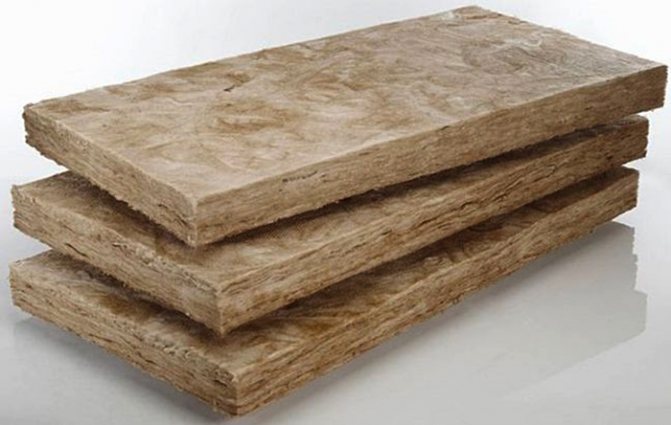
Is a stove and wool the same thing?
As mentioned above, the first stage in the production of basalt slabs is called melt. In order to give the basalt fibers more fluidity, from 10 to 35% of a mixture or limestone can be added to the melt. Such components will reduce the resistance of the material to high temperatures and the influence of an aggressive environment. It cannot be said that a product with such a component composition is a natural basalt slab. Rather, it is basalt mineral wool.
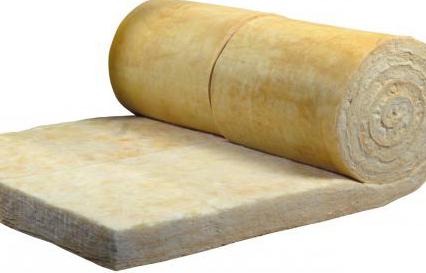

However, it would be wrong to think that rock wool has a much worse performance than a slab. The material can withstand temperatures up to 600˚C (up to 1000˚C - changes color, higher - melts). Thermal conductivity of cotton wool is in the range of 0.042-0.048 W / m². The material is resistant to mechanical stress.
Properties and application
Basalt is an affordable, reliable raw material for building materials.
The mineral is made from:
- mineral fiber;
- stone casting;
- acid-resistant powder;
- paving slabs;
- facing plates;
- paving stones;
- crushed stone;
- concrete.
In addition to house-building production, the mineral is used to fill artificial reservoirs.
Basalt for aquarium is dark in color. It has magnetic properties, has a beneficial effect on the flora of the reservoir.
View this post on Instagram
Publication of Landscaping Krasnodar (@ ldizain23) Jun 8, 2019 8:53 am PDT
View this post on Instagram
Publication from Dinter (@dintera_kirov) 4 Sep 2020 at 12:26 pm PDT
Physiochemical properties
The composition of basalt affects the structure of the mineral. Stones can have a fiberglass, cryptocrystalline aphyric or porphyry structure. In the latter case, inclusions of greenish, white or graphite color are visible in the mineral section. The proportion of these formations can reach a quarter of the mass of the mineral.
The technical characteristics of the stone include:
- high strength;
- hardness 6-7 on the Mohs scale;
- density,
- flexibility;
- plastic;
- heat resistance.
Basalt is melted at a temperature of 1000-1400 degrees Celsius. The mineral is resistant to the action of caustic alkalis or acids.
Mineral composition includes:
- plagioclase;
- clinopyroxene;
- magnetite;
- volcanic glass.
In addition, there are inclusions from olivine, white plagioclase, and dark pyroxene.
In the chemical composition of the stone, oxides of silicon, aluminum, calcium have the largest share. It also contains potassium and sodium alkalis.
Magical and healing properties
The volcanic mineral has been revered by people since ancient times. It was believed to have the strongest protective properties. Amulets or amulets were made from it. Basalt brings good luck to its owner, endows him with courage and perseverance.
The mineral has a beneficial effect on the function of the nervous system. It has a calming, tonic effect. Basalt normalizes the work of the endocrine glands, helps to recover faster after severe shocks or illnesses.
Basalt jewelry and products
In addition to the construction industry, basalt is used to make jewelry. Lava jewelry has an attractive appearance and protective properties.
Basalt is used to make:
- bracelets;
- pendants;
- beads.
Due to their significant weight, earrings are rarely made.
Lava stone jewelry is equally appropriate for both women and men. They will help create a spectacular look. Basalt accessories look best with ethnic or boho outfits.Large brown beads in combination with colorful dresses and blouses will look the most relevant.
You should not wear basalt jewelry for evening receptions and official events.
An exception can be made for minimalistic accessories in combination with an outfit in a classic color (white, black, brown, beige).
View this post on Instagram
Publication of Natural Stones (@story_megan) Jun 9, 2020 6:11 PDT
View this post on Instagram
Posted by Angelina (@linnnami) May 25, 2020 at 2:25 pm PDT
Noise insulation characteristics of slabs
Basalt fibers in the structure of the material are located randomly in different directions, due to which basalt slabs have good acoustic characteristics. In a room with such insulation, the likelihood of vertical excitation of sound waves is significantly reduced. The airborne sound insulation and sound-absorbing characteristics of the walls and ceiling in the room are improved. The reverberation time is significantly reduced (a gradual decrease in the sound intensity with its multiple reflection).
We can say that these heaters (basalt slab, cotton wool) effectively soundproof the room from noise both from the inside and outside of the building.
Environmental friendliness of basalt heaters
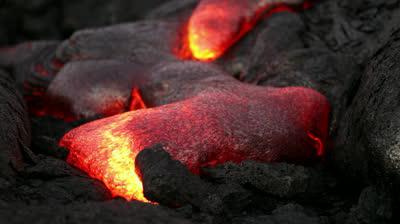

Basalt and limestone, which are used to make slabs, are natural materials. Basalt - once poured out from the bowels of the Earth and frozen magma. This material is perhaps the most widespread on the earth's surface at the present time. Limestone is a sedimentary rock formed from calcites. Insulation with basalt slabs actually allows you to save energy reserves a hundred times more than is spent on their production: extraction, processing, transportation.
Basalt fabric properties
Fabrics woven from a continuous basalt thread are fabrics that have different thicknesses, weights, patterns and types of weaving. It is manufactured in accordance with the requirements for operation.
Basalt fabric has the following properties:
- she has good adhesion of the coating;
- fire retardant, non-flammable;
- has excellent tensile strength;
- retains its integrity at temperatures up to 982 degrees;
- shows resistance to electromagnetic radiation.
Strength and hydrophobicity parameters
Basalt fibers inside the slabs are randomly located, which allows achieving sufficiently high stiffness values of the insulation. Considering that in the production process, binder components are also added to the composition, we can talk about excellent strength parameters and characteristics of the product. And the mineral basalt slab is able to maintain such strength over a long period of time.
Manufacturers today are ready to offer potential buyers both lightweight insulation grades for working with unloaded structures, and rigid basalt slabs. The latter are able to withstand serious loads. The strength characteristics of basalt insulation are such that slabs and mineral wool can be used in any existing building system of sound insulation and insulation. They will provide the most effective quality of protection and durability of structures
The hydrophobicity (water repellency, the ability to avoid contact with water) of basalt slabs is ensured at the production stage by adding hydrophobizing additives to the melt. As a result, the basalt slab acquires excellent water-repellent characteristics, has a rather low water absorption, which ultimately has a beneficial effect on the thermal conductivity coefficient (it decreases). That is, the less a basalt slab is saturated with water, the lower this indicator is.
How not to be mistaken when choosing a material grade?
To choose the right insulation, before buying, you need to decide on the area of application, think about what kind of work you need a basalt slab. The characteristics of any brand will be effective only when used for a certain type of work. For example, if it is supposed to use the material where there will be no increased loads on it, it is quite acceptable to use soft grades of heat insulator. Such places include facade ventilation systems, wall insulation in high-rise buildings (but not higher than 4 floors).
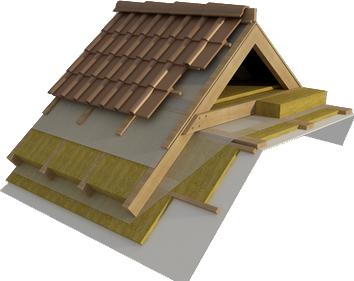

To insulate a multi-storey building in which a ventilated facade with an unlimited air flow rate is finished, it is better to use semi-rigid types of basalt slabs. Experts recommend using rigid brands of insulation in those places of construction sites where heavy loads are expected.
Varieties of basalt cardboard
There are 3 types of basalt cardboard in total:
1. Normal... Consists of compressed fibers and bentonite clay. Differs in environmental friendliness and vapor permeability.
2. Foil... Foil is glued to one side of the sheet. This improves the heat-repelling properties of the material. But, if the foil is attached to the cardboard by means of formaldehyde resin, then, when heated, formaldehyde vapors, harmful to humans, will be released. This type of cardboard should be handled with care and should not be used in open areas.
3. BIM... This is a needle-punched mat, in which the basalt fibers are joined together without the use of any binders. They are simply attached differently, perpendicular to each other. When using BIM, it is necessary to ensure safety for the hands, as they can be damaged by sharp fibers. Nevertheless, this material is characterized by low cost and excellent insulating properties. It is used for laying stoves.
Danger to people
Is the harm caused by basalt slabs to human health a myth or reality? In order to give a certain shape to a slab or a mat made of basalt, manufacturers add formaldehyde (resin) to the composition of the insulation. A priori, the latter are considered harmful and dangerous substances for the human body. And in mineral wool, these resins are freely available. If water gets into the insulation, decomposition processes begin there, and the toxic substances released at the same time enter the human body. However, in certified plants, formaldehyde resins and phenol are in a bound state by the time the insulation is made and are absolutely inert to the environment. Hence, we can conclude that basalt mineral wool slabs are harmful to humans and the environment only if they were made from low-quality materials and handicraft methods. Such insulating materials, of course, do not comply with sanitary standards, contain many harmful impurities and are dangerous to humans.
If we are talking about the harm from getting the smallest particles of basalt slabs into the respiratory tract or under the skin, then this is practically impossible. Modern basalt heaters are very durable, their fibers are soldered to each other, and the separation of small particles is not possible. In this, basalt insulation is much safer than materials of past generations, for example, such as glass wool.
Development perspective


Already today, the basalt slab has been widely used in various spheres of human life. Currently, this insulation occupies one of the leading places in the field of construction. Even though the production process of basalt insulation is quite energy-intensive, this material is available to a wide range of consumers with completely different financial capabilities.And, as you know, the optimal combination of the price of a product and its quality is the path to success and recognition.

